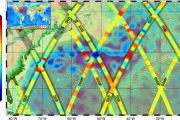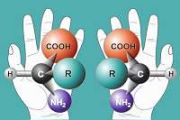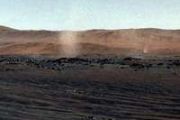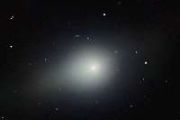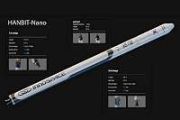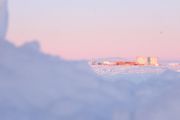
Copernical Team
Under pressure - space exploration in our time
 A new paradigm is taking shape in the space industry as the countries and entities accessing space continue to grow and diversify. This dynamic landscape creates both competition and potential for scientific collaboration, as well as the challenges and opportunities of progress.
In the past decade, humanity has seen the birth and expansion of a commercial space sector with new, private pla
A new paradigm is taking shape in the space industry as the countries and entities accessing space continue to grow and diversify. This dynamic landscape creates both competition and potential for scientific collaboration, as well as the challenges and opportunities of progress.
In the past decade, humanity has seen the birth and expansion of a commercial space sector with new, private pla Multi-Orbit Strategy Takes Flight as Avanti and Telesat Sign Groundbreaking MOU
 In a significant stride toward revolutionizing global broadband connectivity, Avanti Communications has announced a strategic partnership with Telesat (NASDAQ and TSX: TSAT), a leading name in satellite services. This collaboration, formalized through a Memorandum of Understanding (MOU), is set to spearhead the development and testing of Low Earth Orbit (LEO) services, marking a pivotal componen
In a significant stride toward revolutionizing global broadband connectivity, Avanti Communications has announced a strategic partnership with Telesat (NASDAQ and TSX: TSAT), a leading name in satellite services. This collaboration, formalized through a Memorandum of Understanding (MOU), is set to spearhead the development and testing of Low Earth Orbit (LEO) services, marking a pivotal componen From City Streets to Remote Peaks: Thuraya's SKYPHONE Promises Global Connectivity
 Thuraya Telecommunications Company has introduced at Mobile World Congress 2024 the SKYPHONE by Thuraya. This innovative device is heralded as the world's most powerful consumer smartphone, offering unparalleled satellite connectivity for both consumers and businesses. The launch marks a pivotal moment in mobile telecommunications, blending the everyday functionality of a smartphone with the exp
Thuraya Telecommunications Company has introduced at Mobile World Congress 2024 the SKYPHONE by Thuraya. This innovative device is heralded as the world's most powerful consumer smartphone, offering unparalleled satellite connectivity for both consumers and businesses. The launch marks a pivotal moment in mobile telecommunications, blending the everyday functionality of a smartphone with the exp Biden hails US lunar landing as space milestone
 President Joe Biden on Saturday hailed the landing of a US spacecraft on the Moon as a historic achievement in space research led by the United States.
The uncrewed Odysseus lander, built by a private company and funded by NASA, landed near the lunar south pole Thursday, more than 50 years since the agency's last Apollo 17 mission to Earth's cosmic neighbor.
Biden called the landing "a t
President Joe Biden on Saturday hailed the landing of a US spacecraft on the Moon as a historic achievement in space research led by the United States.
The uncrewed Odysseus lander, built by a private company and funded by NASA, landed near the lunar south pole Thursday, more than 50 years since the agency's last Apollo 17 mission to Earth's cosmic neighbor.
Biden called the landing "a t Blue Origin prepares New Glenn for maiden launch
 Blue Origin marked a significant milestone in its space exploration endeavors with the first rollout and vertical positioning of its New Glenn rocket at Launch Complex 36 (LC-36). This event unveils the advanced heavy-lift vehicle to the public, showcasing its capability to support a wide range of missions, including contributions to NASA's Artemis program for lunar exploration.
The New Gl
Blue Origin marked a significant milestone in its space exploration endeavors with the first rollout and vertical positioning of its New Glenn rocket at Launch Complex 36 (LC-36). This event unveils the advanced heavy-lift vehicle to the public, showcasing its capability to support a wide range of missions, including contributions to NASA's Artemis program for lunar exploration.
The New Gl Ubotica's CogniSAT-6 Mission to Deliver Real-Time Earth Intelligence from Space
 Ubotica is gearing up for the launch of CogniSAT-6, a mission that signifies a significant advancement in Earth Observation (EO) technology, with a scheduled departure aboard SpaceX's Transporter 10 in early March. Distinguished by its onboard AI and capability for real-time data processing and communication, CogniSAT-6 aims to bridge the gap between data collection in space and actionable intel
Ubotica is gearing up for the launch of CogniSAT-6, a mission that signifies a significant advancement in Earth Observation (EO) technology, with a scheduled departure aboard SpaceX's Transporter 10 in early March. Distinguished by its onboard AI and capability for real-time data processing and communication, CogniSAT-6 aims to bridge the gap between data collection in space and actionable intel Terran Orbital's Nanosatellite Surpasses 450 Days in Lunar Service for NASA
 Terran Orbital Corporation (NYSE: LLAP), a leader in small satellite technology, has achieved a significant milestone with its 12U nanosatellite, which has now exceeded 450 days in orbit around the moon. This achievement is part of the CAPSTONE (Cislunar Autonomous Positioning System Technology Operations and Navigation Experiment) mission, in collaboration with Advanced Space, to support NASA's
Terran Orbital Corporation (NYSE: LLAP), a leader in small satellite technology, has achieved a significant milestone with its 12U nanosatellite, which has now exceeded 450 days in orbit around the moon. This achievement is part of the CAPSTONE (Cislunar Autonomous Positioning System Technology Operations and Navigation Experiment) mission, in collaboration with Advanced Space, to support NASA's UK Space Industry to tackle skills shortage and defence roles at Space-Comm Expo
 Scheduled for 6-7 March 2024, Space-Comm Expo aims to enhance discussions within the UK's commercial and defence space sectors, providing a networking and collaboration platform. Following an industry-wide survey, the event highlights the sector's call for increased government support and strategies to address the skills shortage.
The Space-Comm Expo's annual survey reveals critical insigh
Scheduled for 6-7 March 2024, Space-Comm Expo aims to enhance discussions within the UK's commercial and defence space sectors, providing a networking and collaboration platform. Following an industry-wide survey, the event highlights the sector's call for increased government support and strategies to address the skills shortage.
The Space-Comm Expo's annual survey reveals critical insigh Stratolaunch conducts second captive carry flight of Hypersonic Vehicle TA-1
 Stratolaunch, a pioneer in aerospace technologies, has announced the successful completion of its second captive carry flight involving the Talon-A hypersonic test vehicle, TA-1. This latest flight marks a significant step forward in the company's ambitious program to develop and launch hypersonic vehicles, offering a glimpse into the future of high-speed aviation and defense capabilities.
Stratolaunch, a pioneer in aerospace technologies, has announced the successful completion of its second captive carry flight involving the Talon-A hypersonic test vehicle, TA-1. This latest flight marks a significant step forward in the company's ambitious program to develop and launch hypersonic vehicles, offering a glimpse into the future of high-speed aviation and defense capabilities. Ariane 6 readies for summer launch after eco-efficient transport to Europe's Spaceport
 The Ariane 6 rocket components have arrived at the port of Pariacabo in Kourou, French Guiana, signaling a key phase in the preparation for its launch this summer. This event marks a significant step for European space initiatives, emphasizing an innovative approach to reducing environmental impact in space logistics.
The Canopee, a ship designed for this specific purpose, transported the
The Ariane 6 rocket components have arrived at the port of Pariacabo in Kourou, French Guiana, signaling a key phase in the preparation for its launch this summer. This event marks a significant step for European space initiatives, emphasizing an innovative approach to reducing environmental impact in space logistics.
The Canopee, a ship designed for this specific purpose, transported the 


